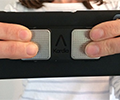Tag Archives: electrocardiography
February 2025 Br J Cardiol 2025;32(1) doi:10.5837/bjc.2025.009 Online First
Successful medical management of Wellens’ syndrome type B in an elderly patient with high procedural risk
Aqib Khan, Ismail Sooltan, Sudantha Bulugahapitiya
| Full textMay 2022 Br J Cardiol 2022;29:64–6 doi:10.5837/bjc.2022.018
Evaluation of the prognostic value of the admission ECG in COVID-19 patients: a meta-analysis
Mateusz Wawrzeńczyk, Marcin D Grabowski
| Full textJanuary 2019 Br J Cardiol 2019;26:19–22 doi:10.5837/bjc.2019.003
ICMs can be routinely implanted in a non-theatre environment by a cardiac physiologist
Varun Sharnam, Stelios Iacovides, Luisa Cleverdon, Wasing Taggu, Philip Keeling
| Full text
March 2018 doi:10.5837/bjc.2018.006
Diagnostic utility of real-time smartphone ECG in the initial investigation of palpitations
Anthony D Dimarco, Eunice N Onwordi, Conrad F Murphy, Emma J Walters, Lorraine Willis, Nicola J Mullan, Nicholas S Peters, Mark A Tanner
| Full textFebruary 2002 Br J Cardiol 2002;9:106-8
Does the routine use of lead increase prognostic yield in exercise electrocardiography?
Khalid Mahmood, Daniel Higham
| Full text

